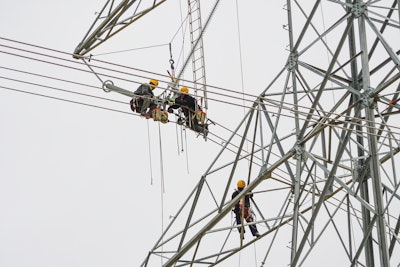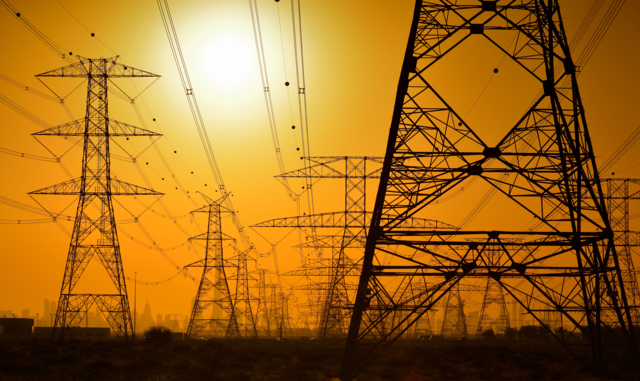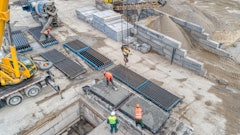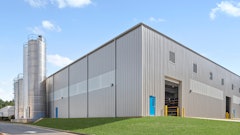
The concept of the “electrification of society” sounds great – transition everything that runs on gas or diesel to electricity and the environment will become cleaner, equipment will run better and people will be happier.
But all this electricity doesn’t just happen – to meet the inevitable demand, the electric grid needs to radically expand. There have been a variety of estimates regarding how much the grid needs to grow, but at last year’s EEI conference, the person most associated with electrification, Elon Musk, said the grid needs to triple its output by 2045.
The electrification of society is just one dynamic that is fueling growth. Society also runs on the data centers that drive the internet. These data centers are a major consumer of electricity – not only to run computer equipment, but also to power the considerable air conditioning capacity that they all use. Crypto mining is another related area of computing that is consuming enormous amounts of electrical power.
Add it all up, and virtually all electric utilities are engaged in extensive construction projects to expand the grid, lest they either run out of power or hike rates to untenable reaches. This unprecedented expansion is open to the same crime issues faced every day by construction companies. Construction means workers need access to tools and other equipment that can be easily monetized, and there are a variety of components that are made from copper, aluminum and other precious metals. All of these are prime targets for criminals.
 Electrification is exciting but it is also a daunting challenge for utilities.@naufalmq - adobe.stock.com
Electrification is exciting but it is also a daunting challenge for utilities.@naufalmq - adobe.stock.com
A New Kind of Security Approach
Utilities have an interesting physical security approach – for any infrastructure considered “critical,” security is a combination of video-based systems attached to a high-end SCADA network and live guards. Should this system detect anything amiss, the response is robust, often including law enforcement personnel and sometimes the national guard.
But for less critical infrastructure, security is often laxer. Remote substations, for example, may have a fence around the perimeter and that’s about it. Crime is usually an “after the fact” concern handled by public authorities because cost, more than anything else, is the driving factor. With grid expansion, though, the cost of crime will escalate because there is so much to steal. Utilities must find a way to prevent criminal activity from delaying projects and causing material damage.
Bringing Mobile Security to Bear
Utility construction sites and their associated laydown yards, where equipment is stored for future use, bring their own set of physical security issues, including:
- They’re transient: Once construction is done, crews pack up and move to the next project. “Permanent” security can’t be set up until the project is complete. This means utilities need security that is readily transportable between worksites and laydown yards.
- They constantly evolve: It makes no sense to secure a specific area permanently because it may no longer be a security risk when work evolves. Any utility infrastructure work is a living, breathing project where different areas progress at different rates. Physical security must be able to move with work, to make it effective.
- They’re target-rich environments: As mentioned earlier, utility construction sites and laydown yards are rife with valuable items and materials. One utility customer even reported that thieves stole their excess diesel fuel. Nothing is truly safe.
This can be a challenge for electrical utilities because they’re not accustomed to a world where worksites are constantly changing, as they are with grid expansion. They’re also not used to outsourcing security to cover areas that are not under the aegis of their permanent security infrastructure or financially viable for live security guards. This is largely because there are exacting safety requirements on an electrical utility site. One errant activity can mean grave injury or death, so outside vendors need to understand how to dress and behave on an electrical utility construction site to maintain safety standards.
The answer is to have access to a readily movable mobile video-based security unit operated by a trusted security partner who understands how electrical utility sites work and won’t cause any safety issues. These mobile units can provide 24x7 security coverage for the areas they monitor. And, they can be moved as work evolves or sites change.
Mobile video security monitors are connected to a remote security operations center (SOC) where “virtual guards” can take action when it is necessary. The units include audio and visual deterrents that can scare off would-be criminals before they have a chance to do any damage. This is the goal with any physical security undertaking – stop crime without having to notify public authorities.
As with all SOCs – physical and cyber – false positive alerts are a problem. This is when virtual guards go down a “rabbit hole” investigating something that is not criminal. Good systems will use artificial intelligence (AI) to reduce the number of these alerts. The AI is “trained” on what criminal behavior looks like, and only issues alerts accordingly. This dramatically reduces the number of alerts SOC personnel must look at.
Electrification is exciting but it is also a daunting challenge for utilities. As they expand the grid to accommodate it, they also must change the way they think about physical security. It’s no longer about protecting your most critical assets; it’s about protecting everything you’re building.

















